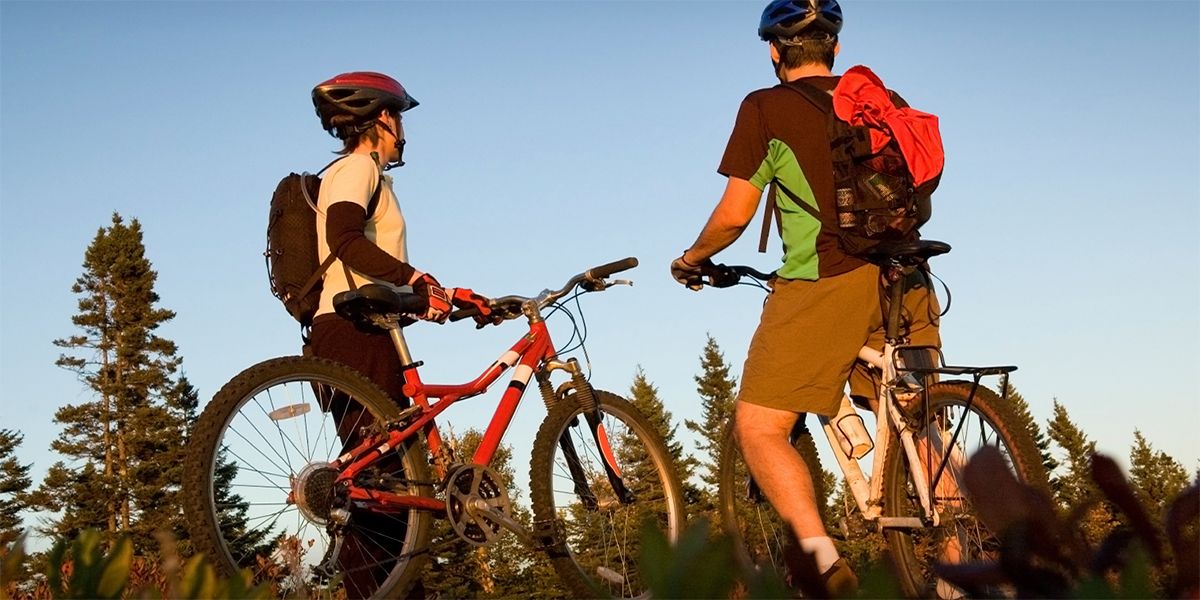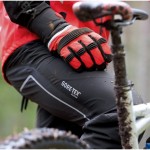
Bikes: An Exhaustive Buying Guide
A bike is a good transportation mean in fair distances as it will get you there while enabling you to stay fit at the same time. Bikes can also be used for other purposes, such as for a full workout or wander in nature for example. And for any of these reasons you want to purchase a bike, you’ll find a particular type that fills that role. So in making an informed choice when buying a bike, here is a complete buying guide to help you see things clearer. We are going first to go through the different types of bikes with a particular focus on each one’s advantages and disadvantages; then seek to see the interesting features you should be looking for; follows next a presentation of the main brands; and finally end the guide with a few useful buying tips.
I- The Different Types:
There are four main types of bikes: comfort, mountain, road, and fitness bikes. Note that you may also find some models that are a hybrid of types.
1- Comfort Bikes:
Such bikes are designed as the name entails to bring you as much convenience and enjoyment as possible on either paved or smooth dirt roads. They feature therefore a rather large seat featuring shock absorbers and high handlebars.
Advantages: Emphasis is obviously on the user’s comfort. Plus, a typical comfort bike has low gear, which makes pedaling uphill notably less straining. Overall, comfort bikes are less expensive than the other types.
Disadvantages: Pedaling on a bumpy field with a comfort bike is quite the challenge, not to mention it is easily bested by a mountain bike in an off-road environment.
2- Mountain Bikes:
This type is more suited to off-road, bumpy kind of paths, meaning you will typically find a front suspension fork and in some instances rear suspension, all for the necessary shock absorption to handle precisely and with ease the bike on a harsh field. Mountain bikes’ tires have the particularity to be rather large and knobby, the handlebar could be flat or riser, and the saddle could also be either narrow or slightly larger.
Advantages: Mountain bikes are very resistant and durable as the are quite good at absorbing shock, making them the off-road bike par excellence.
Disadvantages: They are bulkier than fitness and road bikes, which makes them not as convenient in-road
3- Road Bikes:
These bikes are made for the less casual, more athletic users out there. Road bikes are in fact able to go pretty fast and also handle long distances, like say if you were taking a multi-day tour. Such bikes are recognizable thanks to the very light frame, even more light and skinnier tires, a rather small seat, and the handlebars are lowered, making you bend. Some models referred to as performance road bikes have a longer head tube (the tube under the handlebars) that rises the user’s position a bit. You can also find another subgroup of road bikes, called cross bikes, that differ with the tires that are wider and similar to those of mountain bikes, specializing thus in off-road biking.
Advantages: The aerodynamic position standard road bikes enable are preferred by cyclists desiring maximum performance.
Disadvantages: On the other hand, that very same position may prove uncomfortable for many less experienced cyclists, conventional and subgroup road bikes alike.
4- Fitness Bikes:
Fitness bikes share with road bikes their skinny tires, small and narrow seat, and the lightweight frame but differ from the latter with horizontal handlebars and and a risen riding position, similar to that of mountain bikes. Fitness bikes are as the name implied perfect for a working out activity or short distance commuting.
Advantages: They are more comfy, only slightly heavier, and significantly less expensive than road bikes.
Disadvantages: They are on the other hand less aerodynamic than road bikes, making it a somewhat less speedy bike.
II- The Interesting Features:
The Brakes:
A bike may have different types of brakes. The reliable standard types are V-brakes/linear-pull brakes, cantilever brakes, and caliper brakes. If you’re looking for performance, consider mechanical/hydraulic disc brakes that have not the notable benefit of preventing abrasion of your wheel rims caused by muddy braking. If you want to switch your bike to disc brakes, a bike shop might do it for you for a hundred of dollars.
The Speed Gears:
The bike’s chain by definition runs between the rear cassette that links to the rear wheel and the crankset situated in the center of the bike. Cranksets may have double or triple chainrings. You may shift from one chainring to the other (called coarse gearing adjustments) and also shift among the rear cassette sprockets (called fine gearing adjustments). Multiply the number of sprockets with the number of chainrings and you get the total number of speed available. The more speed you have, and the more flexibility you can have on the different grades.
The Seat (Saddle):
They could be either narrow and rough or large and cushioned. You may find models with a suspension seatpost or rigidly mounted. You can change the seat to one more of your liking if you wish so, there are different shapes, different levels of padding, channels, and cutouts available to find what saddle suits you most.
On the practical side, having a narrow seat present in road and mountain bikes allows for a better control of the bike as well as an added efficiency in pedaling. A wider seat means it would be more comfortable, making it a fit for casual cyclists.
The Handlebars:
High-rise handlebars make you sit a little upright, allowing for an aerodynamic bent position. You can swap the handlebars and stems to adjust your preferred riding position, each cyclist has his/her own predilection. In any case, if you are not comfortable with the handlebars or stem, switch them to another type.
The Shifters:
Moving the chain between the rings is the front derailleur’s role, while the role of the rear derailleur is to move between the sprockets of the rear cassette. The shifters are what control the derailleurs, they are found on the handlebars and are ultimately used to change gears. The shifters, depending on the model, can either be twisted or triggered with levers (one for upshifting, the other for downshifting). The shifters click when you change gears.
The Accessories:
Helmets can prove to be lifesavers in case you get into an accident. Aside from that, there are cycling shoes that improve your pedaling, although you may need to replace the pedals in order to make them suitable for the shoes. Another useful accessory is the gloves that are quite handy in protecting your hands in cold weather; and it’ll also absorb vibrations. Similarly, glasses will protect your eyes against bugs and other disturbances that might come across your face. Finally, a water bottle is always a convenient accessory to install on the bike, especially on long rides or in the summer.
III- The Major Brands:
In alphabetical order:
Cannondale:
A Dorel Industries brand, the company manufactures road, fitness, mountain, urban-look, and also women-specific designs. You can find Cannondale bikes in specialty shops as well as independent dealers.
Fuji:
A more than a century Japanese brand, Fuji is well-known for its BMX line as well as mountain, road, lifestyle, women, and children bikes. You can also find Fuji at every honest bicycle specialty store and independent dealers. Insuring quality, prices can range for road bikes from $470 to a dazzling $6,340 while its mountain bikes vary from $240 in the low end to top notch $3,400 models.
Giant:
A Taiwanese brand, Giant sells BMX, road, mountain, fitness, hybrid, women’s, and also bikes for children. You can buy Giant bicycles at specialty stores, comfort bikes ranging from $300 to $600, mountain bikes from $250 to $600, road bikes from $500 to $7,000, and fitness bikes also ranging from $400 to $1,000.
Jamis:
An American company, Jamis sells comfort, mountain (called trail bikes by the company), road, cross bikes, as well as models tailored for women and other for younger children and teens. Found at specialty shops, a Jamis comfort bike can range from $250 to $375, while a Jamis road bike can be as low as $550 or as high as $6,500.
Klein:
Another American company, Klein is specialized in mountain and road bikes that are intended for the most part for export. You can find Klein bikes in the U.S only in some independent bike shops, and not in every state. Devoted to high end products, a Klein mountain bike range from $1,540 to $2,750, while the brand’s road bikes range from $1,980 to $4,180.
LeMond:
Named after its founder Greg LeMond who is the first American to win the illustrious Tour de France in 1986, LeMond Bikes produces road racing, cross, track and women’s bikes. The prices vary from $769 to $1,769.
Mongoose:
Manufactured by Pacific Cycle, another property of Dorel Industries, Mongoose features mountain, road, comfort, hybrid bikes, and also BMX models. You can find the brand in specialty shops, general sport goods stores as well as in some mass-market stores. Mongoose mountain bikes range from $280 to $800, its comfort bikes from $300 to $350, and its road bike model is currently priced at $2,700.
Raleigh:
From the same company that makes Diamondback bike, Raleigh line of models comprises mountain, road, fitness (referred to as performance hybrid), track, comfort (tandem), cruiser, and youth bikes. There are numerous Raleigh stores across the country, with prices ranging from $275 to $690 for comfort bikes, while for fitness bikes it is from $520 to $1,550, mountain bikes between $275 and $1,325, and road bikes are as usual comparatively more expensive, between $520 and $2,725.
Schwinn:
Another brand of Pacific Cycle, Schwinn sells a wide array of bikes, from the usual road, mountain and comfort bikes to cruisers, children’s bikes and BMX models. Schwinn is very present in the U.S, found in mass market megastores as well as sporting goods retailers.The brand’s models cost $390 to $600 for mountain bikes, between $570 and $4,300 for road bikes, and $250 to $1,000 for comfort bikes.
Specialized:
A Californian company, Specialized bikes include mountain, road, fitness and comfort bikes under the street monicker line; there are also BMX and bikes for women and children. You will find Specialized bikes in specialty stores and some independent dealers. The pricing is between $360 and $5,500 for mountain bikes, $750 to $7,400 for road bikes, $360 to $470 for comfort bikes, and $590 to $2,050 for fitness bikes.
Trek:
A Wisconsin based company, Trek offers mountain, road, urban, and women’s and children’s bikes. You can buy Trek bikes at specialty bicycle shops and independent retailers. Their mountain bikes are between $330 and $6,050, and their road bikes between $520 and $8,250.
IV- Buying Tips:
What You Get For More Money:
More money is usually synonymous with high quality materials, such as a carbon fiber, aluminum, a mix of both these 2 materials, or sturdy steel to make the light frame. Anyhow, a few hundred dollars and you would still get a good quality bike.
Choose The Type of Bike According To Your Needs:
If you’re thinking to get a bike with the best performance, take a road bike. Instead, a comfort bike is best for casual riding or short commuting, while mountain bikes are suited for off-road sightseeing.
Prefer Reputable Bike Shops:
A good bicycle shop means more money, but you would be less likely to regret it as mass market stores with their big boxes might be a bit misassembled or a good fit for your body. In addition, there are some bike shops that can replace a model’s pedals or saddle if you don’t like them, and that for free or for a small reasonable fee.
Test Before Buying:
It is best to test ride a bike before purchasing so you can confirm that the brakes and shifters are easy to use, that the bike is comfortable enough for you, that the gears can be sufficiently low against hill climbing for example, and that the suspension and frame absorb shocks and bumps appropriately.
Unless For Casual Purposes, Don’t Go For A Cheap Bicycle:
Cheap bikes costing less than two hundred dollars should be avoided if you’re going to use it more than for a very casual ride. Something around $300 or more is more adequate because of the added features that really make a difference.
In fact, bikes found in mass market stores have often a low quality construction and also weigh up to 7-8 pounds more, not to mention you won’t get the same quality service, assembly, and advice than in a specialty bicycle shop. Comparatively, an expensive front-suspension model is better than a cheap full-suspension model. A mass market bike remains a good idea for a children who will get bigger for it in no time or he/she wouldn’t care much for it and handle it roughly.























